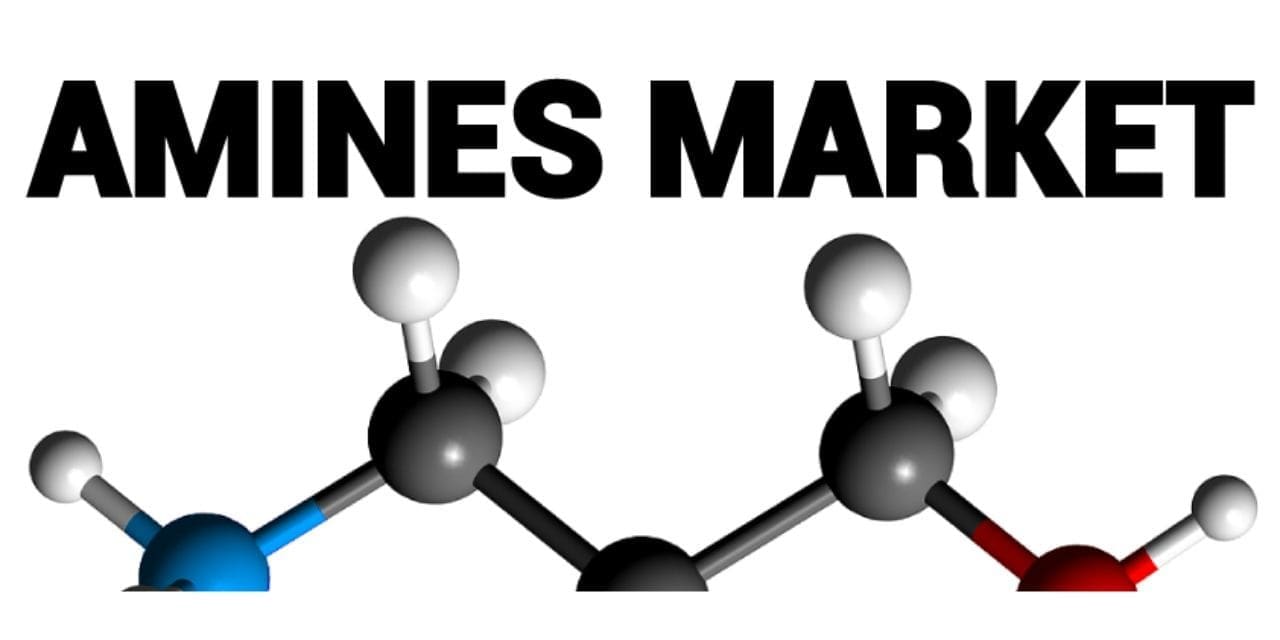According to the detailed report by Future Market Insights, the global amine hardener market recorded sales of US$ 1.5 billion in 2018. The market experienced a 4.0% year-on-year growth in 2022, and it is anticipated to achieve revenue of US$ 1.7 billion in 2023. Over the assessment period from 2023 to 2033, the global market is projected to expand at a compound annual growth rate (CAGR) of 5.1%, resulting in a market size of US$ 2.9 billion by the end of 2033.
Amine hardeners, also known as amine curing agents or amine epoxy hardeners, are a type of curing agent commonly used in epoxy resin systems. These are highly versatile epoxy curing agent and are widely employed in several industries. The global amine hardener market account nearly 48% of the global epoxy curing agent market in 2023.
Drivers Propelling the Demand for Market Growth include:
Stringent regulations promoting the use of lightweight materials in automotive and aerospace industry
Increasing demand for amine hardeners for applications such as flooring, paints and coatings, and adhesives from the construction industry.
Significant rise in demand for advanced lightweight, high mechanical strength and high performing materials from wind energy industry.
Rising demand for solvent free aliphatic amines due to their various characteristics, such as low viscosity, excellent resistance to aqueous alkali, chemical, and solvent.
The increasing adoption of amine hardeners in industrial flooring and protective coatings is creating significant growth opportunities for the market.
Challenges for Companies /Manufacturers in the Amine Hardener Market:
Intense competition from substitutes such as polymercaptan epoxy curing agents and phenalkamine curing agents.
Growing concerns regarding environmental hazards caused by the use of conventional petrochemical-based epoxy curing agents.
Rising awareness towards the negative effects of amine hardeners on human health to hamper the market growth.
Shifting consumer preference towards the use of bio-based curing agents among various end use sectors
Opportunities in the Amine Hardener Industry:
Robust increase in demand from automotive Industry to provide ample space opportunities for the market.
Increasing urbanization and rising infrastructural development especially in emerging economies will drive product demand in construction industry.
The increasing demand for amine curing agent in in flooring, concrete, and steel coatings will flourish demand for the market.
The development of advanced amine curing agent with enhanced properties and more eco-friendly epoxy curing agents provides opportunities for companies to expand their product portfolio.
Significant increase in the demand for cycloaliphatic amine curing agent with low viscosity, excellent chemical resistance, and good mechanical properties.
Latest Trends in the Amine Hardener Market:
Increasing focus on the development of new and innovative amine-based hardeners for applications that require a long pot life such as pultrusion, filament winding, resin transfer molding or casting.
Expansion of production capacities and market footprints through mergers and acquisitions is the new key trend among key manufacturers.
Rising demand for cost-effective and customized modified products for particular end uses such as aerospace, wind energy and others.
Growing efforts towards the replacement of petroleum-based feedstock with naturally occurring and environmentally compatible materials.
Future Forecast for Amine Hardener Industry
Looking ahead, the market is expected to rise at a CAGR of 5.1% from 2023 to 2033. During the forecast period, the market size is expected to reach US$ 2.9 billion.
The market is expected to continue its growth trajectory from 2023 to 2033, driven by increasing demand for epoxy curing agents in construction industry owing to their numerous applications in flooring, paints & coatings and adhesives. Owing to their high mechanical strength these agents are widely utilized in concrete sealers, floorings, structural composites, decorative tile grouts, mortars and chemical resistant tank linings, among other applications.
A new technology for amine curing agents is expected to drive sales of amine hardeners by enabling the production of low-emission epoxy paints with reduced solvents and plasticizers for metal protection in marine and industrial coatings.
Market to Surge in the United States Amid Growing Concerns over Industrial Emissions
The amine hardener industry in the United States is expected to reach a market share of US$ 0.42 billion by 2033, expanding at a CAGR of 4.4%. The market in the United States is expected to witness growth due to the increasing demand for protective coatings from marine and aerospace industry. There are a few other factors expected to drive the demand for amine curing agent in the country are:
The presence of a large number of manufacturers.
Increasing demand for less toxic products with low volatile organic compounds (VOCs).
How Key Players Stay Competitive in the Amine Hardener Industry?
The amine hardener industry is consolidated market with the presence of significant players holding considerable market share. Key players are actively engaged in expansion, acquisitions, and new product launch activities to enhance their global positions along with product portfolio.
Key Strategies Adopted by the Players
Product Innovation
Companies invest hugely in research and development to introduce innovative products that offer enhanced efficiency, reliability, and cost-effectiveness. Product innovation enables companies to differentiate themselves from their competitors and cater to the evolving needs of customers.
Strategic Partnerships and Collaborations
Key players in the industry often form strategic partnerships and collaborations with other companies to leverage their strengths and expand their reach in the market. Such collaborations also allow companies to gain access to new technologies and markets.
Expansion into Emerging Markets
The amine hardener industry is witnessing significant growth in emerging markets such as China and India. Key players are expanding their presence in these markets by establishing local manufacturing facilities and strengthening their distribution networks.

